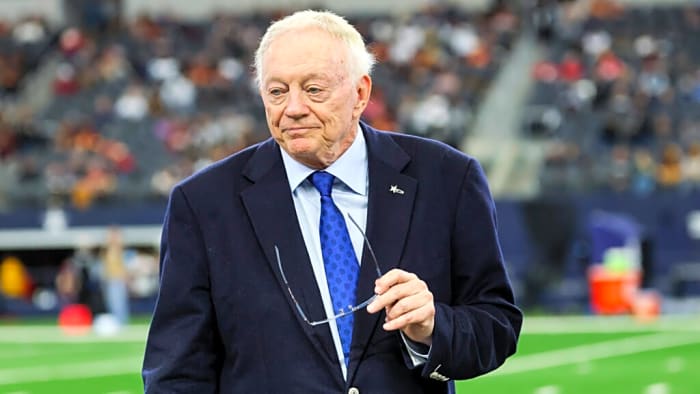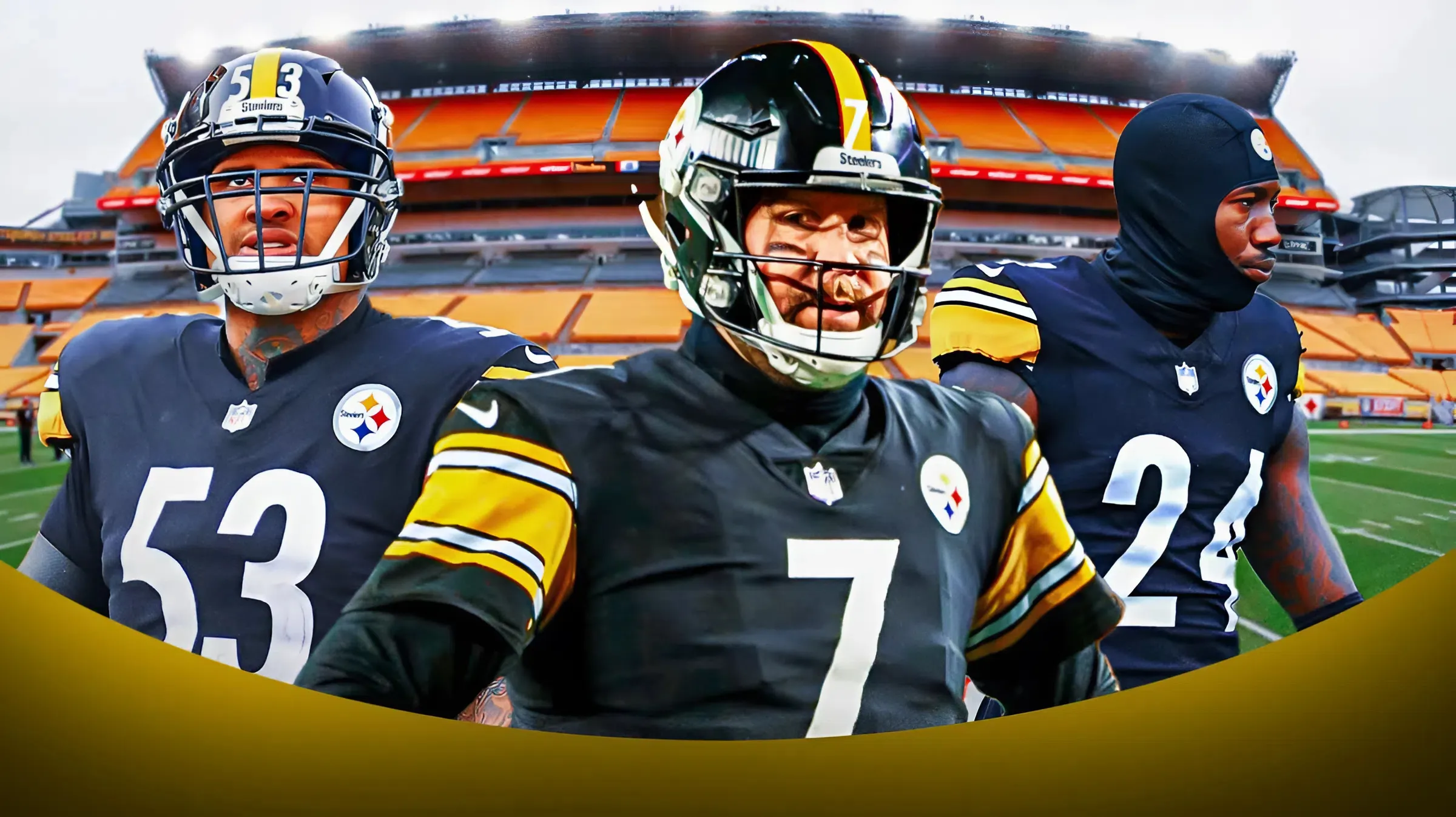Being the Dallas Cowboys’ head coach is a reality unlike anything else in the NFL—and not for the reasons you might think. In Dallas, job security doesn’t come from building a contender. It comes from knowing your place.

A prominent member of the national media recently floated that new head coach Brian Schottenheimer will be one-and-done. But if you’ve followed this team for any amount of time, you know that’s not how Jerry Jones operates.
This isn’t about results—it’s about money. It’s about control. Jerry rarely fires coaches quickly, and it has nothing to do with loyalty or belief. Accountability takes a back seat to obedience, and until that changes, the Cowboys’ head coach reality won’t either.
Head Coach Of The Dallas Cowboys: Success Required, Credit Optional
The Jerry Jones Way
On February 25, 1989, the Dallas Cowboys were purchased by a young, upstart oilman by the name of Jerral Wayne Jones. At the time, the franchise was floundering. The glory years of the 70s were in the rearview mirror, and they had missed the playoffs the previous four seasons. The shine of America’s Team had begun to dull, and it was time for big changes.
First order of business: Fire Tom Landry.
Next item on the docket: Hire Jimmy Johnson.
Power Struggles, Ego, And The Cowboys Head Coach Reality
You never want to be the coach who follows a franchise icon. That guy almost always falls on his face. You want to be the guy after the guy. But Johnson was a home run choice, as controversial as it might have been. Despite inheriting the worst team in the NFL and going 1-15 in his first season, he quickly proved why he was the right hire.
By Year 3, he had Dallas back in the playoffs. Two years later, they were back-to-back Super Bowl champs.
Johnson was a brilliant head coach and arguably the best talent evaluator in the NFL. He could identify exactly who would fit and deploy them in a way that maximized their potential. He knew which buttons to push and when to push them. Johnson was the undisputed architect of that Cowboys mini-dynasty.
For Jones, that simply wouldn’t do.
Eight days after that victory in Super Bowl XXVIII, Jimmy Johnson was out.
As jarring as the Landry firing was, Johnson being ousted was worse. You don’t dismiss a head coach after he wins back-to-back Super Bowls. But there both men were, in a press conference announcing Johnson’s resignation: “We have mutually decided that I would no longer be the head football coach with the Dallas Cowboys,” Johnson said solemnly. He walked away with five years remaining on his contract.
The Shadow of Johnson
Jones hired Barry Switzer away from the University of Oklahoma in 1994, gifting him the best roster in football—one looking to become the first team in NFL history to win three straight Super Bowls. Jones brought Switzer in not to lead a program, but to shepherd a ready-made unit.
Switzer and Johnson could not have been more different, and Jones knew it. Switzer wasn’t a coach who was going to demand authority or want full control of the team. He was happy to carry the title of head coach and let Jones run the show.
By the end of the 1997 season, the wheels had fallen off. Switzer resigned with two years left on his contract after Dallas finished 6-10 and missed the playoffs.
From that point on, Dallas entered the wilderness.
Jones would cycle through head coaches—most lasting five years or less—but the pattern remained the same. Jones retained full control of the team, the spotlight, and the public narrative. And the team continued to lose.
A Revolving Door With One Common Thread

With Switzer out, the turn-and-burn of coaches was on. The names changed, but the structure—and the results—didn’t.
Chan Gailey led the Cowboys to back-to-back Wild Card playoff berths after the team hired him in 1998. Still, he was fired after just two seasons. J has stated publicly that firing Gailey is one of his biggest regrets as owner of the team.
“The most unfair that I’ve ever been in anything…was dismissing Chan after two years,” Jones said back in 2000. “That wasn’t right.”
Regardless, he was gone.
Dave Campo replaced him in 2000, but Jones never gave him a real chance. The roster was a shell of its Super Bowl-winning self, and the team limped to three straight 5-11 seasons. His contract wasn’t renewed.
Bill Parcells arrived in 2003 and was the closest Jones came to hiring a real head coach. A two-time Super Bowl winner, Parcells had the resume—and the ego—to go toe-to-toe with Jones. While he brought stability, including a 10-win playoff season in 2003, he never won a playoff game in Dallas. More importantly, the partnership was never fully functional. Parcells retired for the third and final time in 2006. He never coached again.
Jones hired Wade Phillips in 2007, and he was the perfect Jones coach: qualified, cooperative, and compliant. He delivered the Cowboys their first playoff win since 1996 and earned a two-year contract extension as a result. But the team stumbled to a 1-7 start in 2010, and the team fired Phillips midseason. He remains the only head coach Jones has fired during the season.
Long Leashes, Lame Ducks
Jason Garrett was the apex Jones hire. Or the nadir, depending on how you look at it. A company man through and through, Garrett even backed up Troy Aikman during his playing career. He took over midseason in 2010 and somehow held onto the job for nearly a decade.
By the end, not even Jones could justify keeping him. Garrett coached on the final year of his deal—a true lame-duck—and wasn’t retained after the 2019 season.
Mike McCarthy followed the same script. Brought in to modernize the operation, he enjoyed regular-season success, but nothing meaningful in the playoffs. The Cowboys flamed out in three straight postseason runs, including two home losses.
Like Garrett, McCarthy was a lame-duck who coached the final year of his contract without an extension, and walked away after 2024.
Will Head Coach Brian Schottenheimer Experience The Same Reality?
When the Cowboys named Brian Schottenheimer head coach, the response was a mix of confusion, skepticism, and, from some, derision. A career assistant with an underwhelming track record, Schottenheimer wasn’t exactly a hot name on the coaching circuit. But in Dallas, that’s never the point.
Schottenheimer signed a four-year contract, and if history is any indication, he’s likely to see it through. Not because of his results, but because Jones simply won’t pay two coaches at once. Schottenheimer would have to completely lose the locker room—or the season would have to go fully off the rails—for Jones to pull the plug early. That’s just not how this franchise operates.
There’s always talk about the “hot seat” in Dallas, but it’s usually just that: talk. As long as the head coach doesn’t challenge the owner’s authority or make too many headlines, he’ll probably survive. Accountability is optional. Autonomy is not allowed.
One-And-Done? Not In Dallas
If you’re expecting Schottenheimer to be a one-and-done head coach, you haven’t been paying attention. That simply isn’t how the Cowboys operate under Jones. His firing of Gailey after two seasons was the closest he’s ever come. And he publicly stated the regret he had over that decision.
Jones doesn’t fire coaches. Not because he believes in them, but because it goes against his business model. He doesn’t pay coaches not to coach. He hires men he can manage, and once he finds one, he sticks with them.
Schottenheimer is just the latest in a long line of coaches who fit the Jones profile: compliant, controllable, and willing to work under the only real power in the building. This is the reality of being the head coach of the Cowboys.
So no, Schottenheimer won’t be fired after one season. Because in Dallas, the bar for losing a job is a lot higher than you think.



